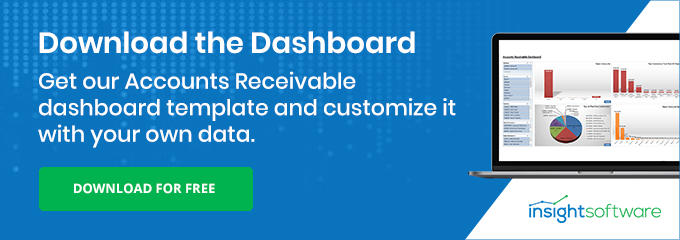Are You Monitoring the Right Accounts Receivables KPIs?

Accounts receivable (A/R) is where the rubber meets the road. Companies can make sales all day and customers can pledge to pay on time and in full. Until those payments arrive, however, sales are just the promise of revenue. They don’t actually do anything for the bottom line until customers pay their bills.
Since so much depends on an efficient and effective approach to A/R, companies need to manage it carefully. Doing so isn’t easy, and it’s an ongoing process, but managing A/R is critical for companies that want to avoid cash flow issues and operational disruptions while ensuring they collect every cent that’s owed to them.
Improving A/R starts by understanding the present performance. Emphasizing the positives and addressing the negatives can’t happen until the CFO and other decision makers invested in AR know what’s working and what’s not. Before it’s possible to make those determinations, companies need to look a lot harder at A/R.
That means focusing on the KPIs that matter most and giving them as much attention as they deserve. Unfortunately, this is easier said than done. Analyzing the necessary data is a major undertaking that can distract accounting professionals from other obligations, particularly since it must also be repeated 12 times each year. In other words, it’s possible for companies to track A/R in depth, but it can also be highly impractical.
One way companies can streamline their efforts is by basing decisions on the right KPIs and paying less attention to the others. A focused effort helps companies direct their limited resources only where they matter most. We suggest you pay particular attention to these accounts receivable KPIs.
- Days Sales Outstanding – Also known as the average collection period, this metric measures how long on average it takes you to collect payment after a sale. DSO is considered the most important A/R metric, but it doesn’t paint the full picture.
- Best Possible DSO – This metric reveals the soonest that companies can begin expecting payments based on their current receivables, total credit sales, and the number of days in the measurement period. Ideally, the DSO is as close as possible (within 3-5 days) to the ideal DSO.
- Average Days Delinquent – Calculated by subtracting the second metric from the first, average days delinquent (ADD) reveals how effective companies are at collecting past due revenue. When the ADD and DSO rise or fall together, it’s a sign of a healthy A/R process. When they deviate, though, it suggests something is off.
- Turnover Ratio – Dividing the average accounts receivable for a period by the net credit sales for that same period results in the turnover ratio: an indicator of how well a company collects on credit. Having a higher ratio (two or above) means a company also has more cash flow and liquidity.
- Collection Effectiveness Index – Measured as the ratio of money a company is owed to money collected over the same period, the collection effectiveness index (CEI) is exactly what it sounds like. Scores closer to 100 percent are better. A dropping score is a clear sign that something is broken in the A/R system.
Knowing what to collect is step one. Knowing how to collect it is step two, and it is arguably the harder part about improving A/R. With data-driven dashboards from insightsoftware, tracking A/R is almost effortless, especially when you already know what KPIs to track. To learn why, explore one of these dashboards yourself, and discover how it makes in-depth data accessible and A/R optimization easy. Get your free download here.








